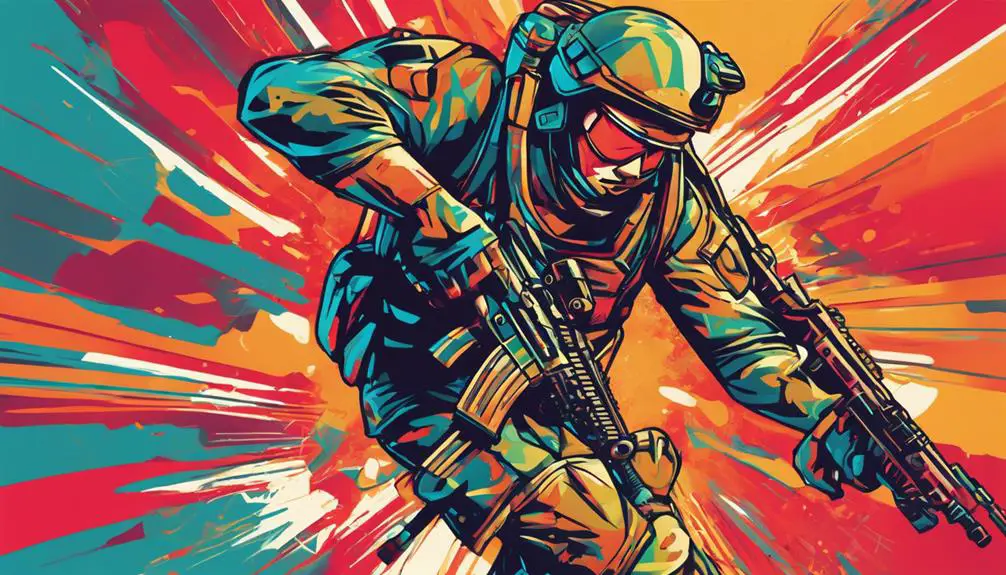You're about to immerse yourself in a world of military slang, where 'saddle up' and 'gear up' are more than just phrases – they're calls to action that get you ready to mobilize. When you hear these commands, you'll know it's time to get moving. 'Saddle up' means to prepare your gear and equipment, while 'gear up' signals it's time to get dressed in your combat attire. These phrases are used to initiate the mobilization process, where every minute counts. As you move forward, you'll discover more phrases that'll help you communicate effectively and stay focused under pressure.
Pre-Deployment Lingo
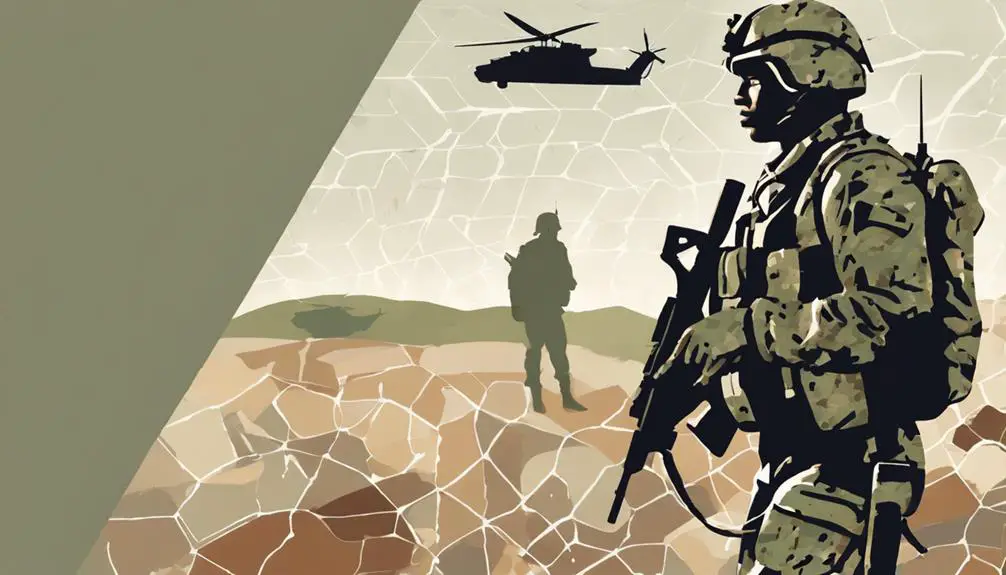
When you're getting ready to deploy, you'll hear commands like 'Saddle up!' or 'Gear up!' – these aren't just catchy phrases, but actual pre-deployment lingo that signals it's time to mobilize. These phrases are part of the pre-combat rituals that get you mentally and physically prepared for the mission ahead. You'll go through deployment drills, rehearsing every possible scenario to make sure you're prepared for anything. Your unit will conduct last-minute checks on equipment, vehicles, and weapons to confirm everything is in working order.
During this time, you'll also participate in pre-combat rituals that help you focus and bond with your team. These rituals can range from simple phrases to elaborate ceremonies, but they all serve the same purpose: to get you ready to face whatever lies ahead. As you gear up, you'll feel a mix of emotions – excitement, nerves, anticipation – but with each step, you'll become more focused, more alert, and more ready to take on the mission.
Moving Out Orders
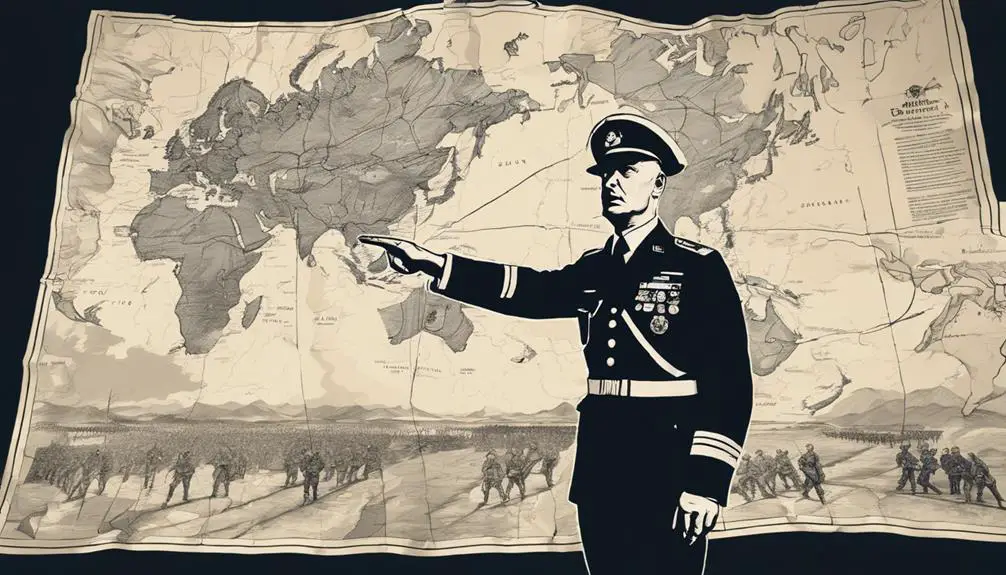
You receive moving out orders, a clear and concise set of instructions that outline the mission's objective, your unit's role, and the timeline for execution. These orders are the result of careful planning and coordination, ensuring you have a clear understanding of what's expected of you and your team. During deployment briefings, you'll receive detailed information on the mission's objective, your unit's role, and the moving timelines. You'll learn about the operational environment, potential threats, and rules of engagement. Pay close attention, as this information is vital to the success of the mission. Your moving out orders will also include essential details such as deployment dates, transportation arrangements, and equipment requirements. Review these orders carefully, ask questions if you're unsure, and make sure you understand your role in the mission. With a clear understanding of your moving out orders, you'll be ready to execute the mission with confidence and precision.
Vehicle Readiness Terms
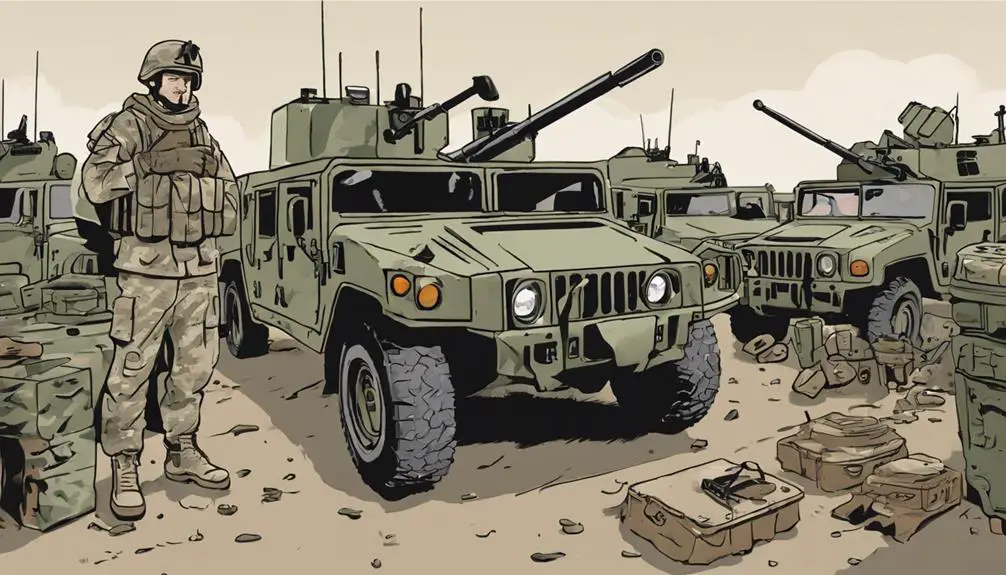
In the high-stakes world of military operations, understanding vehicle readiness terms is essential to guaranteeing a successful mission. You need to know the status of your vehicles at all times, so you can mobilize quickly and efficiently.
When it comes to fuel levels, you'll hear terms like 'full fuel' or '50% fuel.' This tells you exactly how much fuel is in the tank, so you can plan your route and refueling stops accordingly. You'll also hear 'fuel state' to describe the current fuel level, such as 'fuel state Bravo' for 50-75% full.
Vehicle checks are just as important. You'll conduct 'PMCS' (preventive maintenance checks and services) to ensure your vehicle is in good working order. This includes checking fluids, tires, and brakes, as well as performing routine maintenance tasks. You'll also hear 'five-point check' to describe a quick inspection of the vehicle's essential systems, including fuel, oil, and brakes. By understanding these terms, you'll be able to communicate effectively with your team and make sure your vehicles are ready to roll at a moment's notice.
Code Words for Action
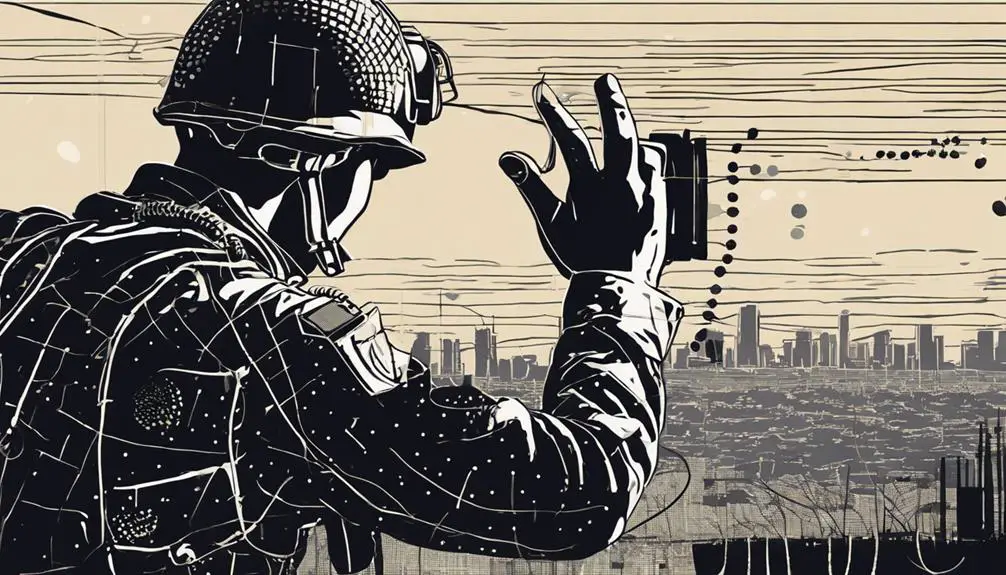
Now that your vehicles are ready to roll, it's time to mobilize, and that's where code words for action come into play. These combat cues and battlefield buzzwords are essential for swift and effective communication on the battlefield. You'll need to familiarize yourself with code words that signal movement, attack, or retreat. For instance, "Breakout" might signal a rapid advance, while "Fall Back" indicates a retreat. "Hold Fast" could mean holding a position, and "Push Through" might signal an all-out assault.
These code words are designed to be concise, clear, and easy to understand in high-pressure situations. You'll need to commit them to memory, as hesitation can be costly on the battlefield. Remember, these aren't just phrases – they're life-or-death instructions that require immediate action. As you mobilize, you'll rely on these code words to coordinate with your team and execute your mission. Stay sharp, stay focused, and always be ready to respond to the next combat cue.
Quick Reaction Phrases
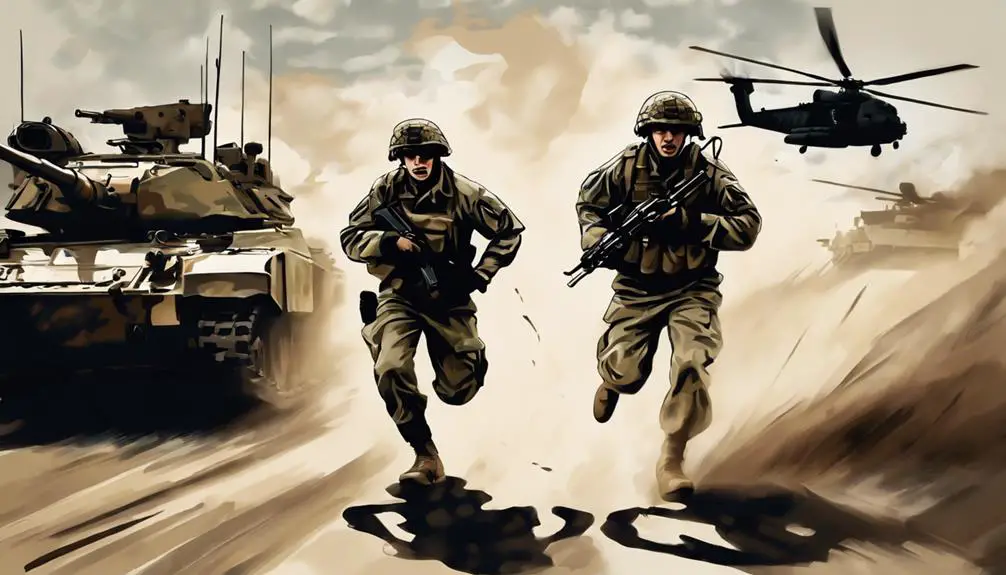
Frequently, military operations require rapid responses to unexpected threats, and that's where quick reaction phrases come in. These phrases are designed to convey critical information quickly and efficiently, allowing you to react swiftly to emerging situations. In high-pressure environments, every second counts, and quick reaction phrases help you stay ahead of the curve.
You'll often hear flash alerts, which signal immediate attention is required. These alerts can be auditory, visual, or a combination of both, and they're designed to grab your attention instantly. When you hear a flash alert, you know to drop everything and respond immediately.
Quick draws are another essential component of quick reaction phrases. These are pre-planned responses to specific scenarios, allowing you to react rapidly and effectively. By having a set of pre-rehearsed responses, you can respond quickly and confidently, even in the most intense situations. By mastering quick reaction phrases, you'll be better equipped to handle unexpected threats and stay one step ahead of the enemy.
Tactical Movement Commands
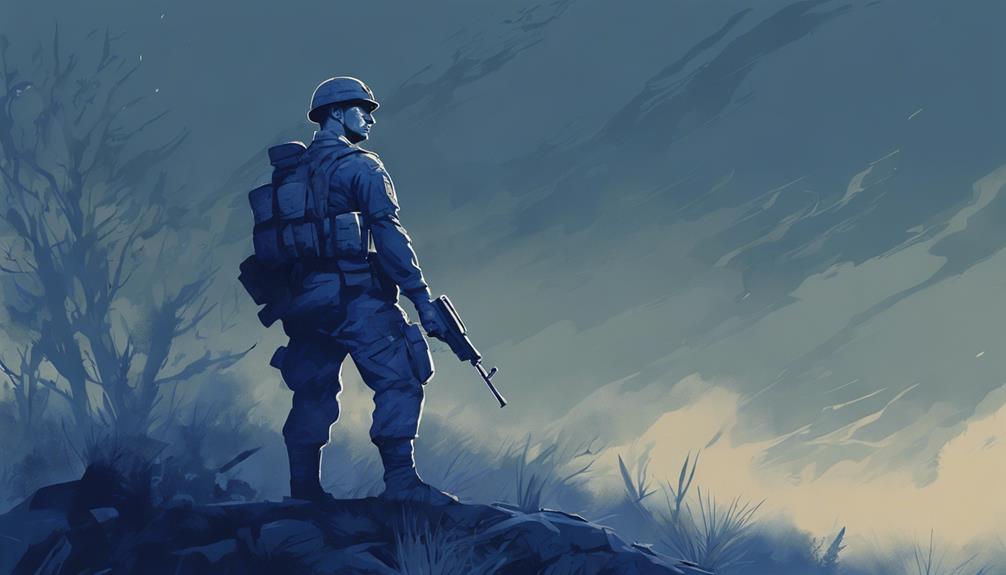
You'll receive tactical movement commands to reposition quickly and safely, using brevity codes and standardized phrases that guarantee clear communication amidst the chaos of battle. These commands will be concise and direct, ensuring you understand what to do and when. When you hear "Move out!" or "Rearrange!" you'll know it's time to reposition to a new location or adjust your formation. You'll also receive instructions for route clearance, which involves securing a path for your unit to move through. This might involve clearing obstacles, checking for IEDs, or scouting for enemy ambushes. At patrol staging areas, you'll receive final briefings and prep for your mission. Here, you'll receive critical information, such as the mission objective, enemy disposition, and rules of engagement. With these tactical movement commands, you'll be able to move swiftly and safely, accomplishing your mission objectives with precision and accuracy.
Mission Briefing Slang
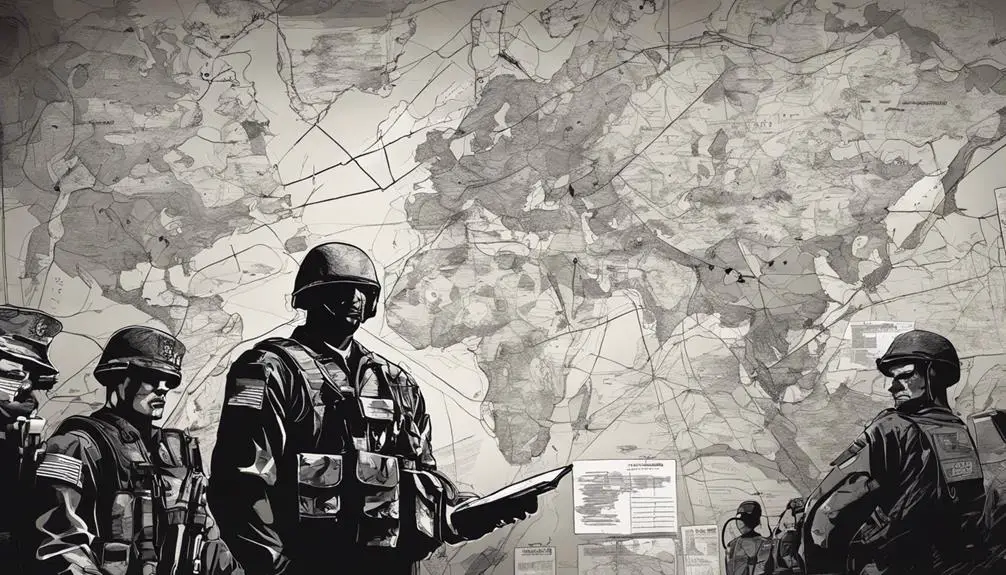
In mission briefings, you're provided important info in a concise, standardized way, using specialized slang to guarantee you grasp the op's objective, potential threats, and rules of engagement. These operational briefings are critical to mission success, and you need to understand the lingo to stay on the same page as your team.
Familiarize yourself with mission prep phrases like 'SITREP' (situation report) and 'COMMS' (communications), which are essential for conveying crucial info during the briefing. You'll also hear terms like 'AO' (area of operations) and 'COA' (course of action), which clarify the op's scope and objectives.
During the briefing, pay attention to phrases like 'ROE' (rules of engagement) and 'EOF' (enemy order of battle), which outline the parameters of the mission and potential threats. Remember, the goal of the briefing is to make sure everyone's on the same page, so stay focused and take notes – your life and the success of the mission depend on it.
Alert and Assemble Calls
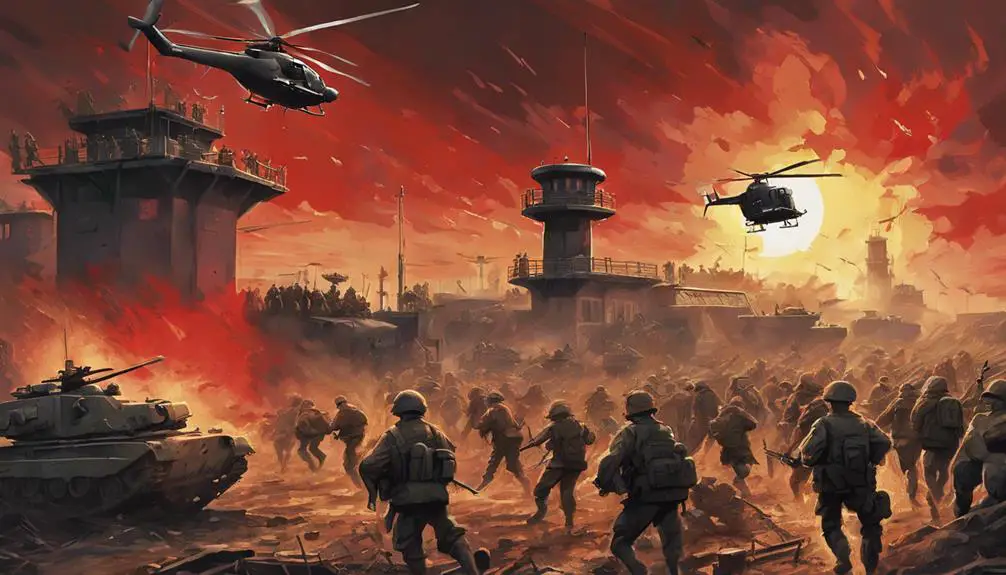
When mobilization orders come down, you'll receive an alert call, prompting you to drop everything and assemble with your unit at a designated rally point. This alert call triggers a series of alert procedures, guaranteeing a swift and coordinated response. Your unit's assembly point designations are predetermined, and you'll report to the designated location with your gear and equipment. It's vital to move quickly and efficiently, as every minute counts in a mobilization scenario.
Upon arrival at the assembly point, you'll receive further instructions and briefings from your unit leaders. Be prepared to provide accountability, as roll calls will be conducted to make sure everyone is present and accounted for. Your unit will then proceed to the designated mobilization site, where you'll receive additional instructions and prepare for deployment. Remember, speed and precision are critical in this phase of mobilization. Stay focused, follow procedures, and be ready to move out at a moment's notice.
Rapid Response Codes
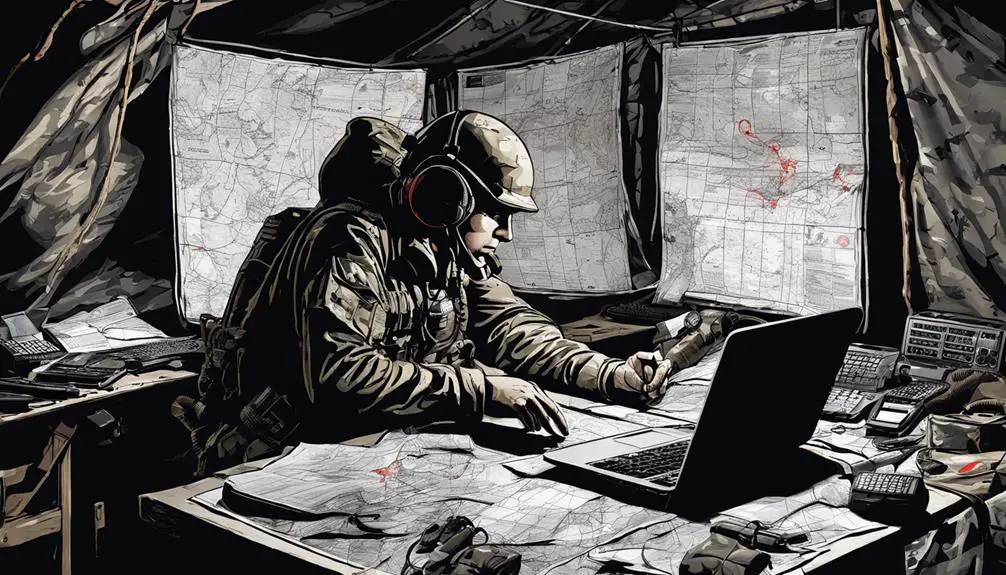
Rapid response codes are pre-designated signals that facilitate swift communication during mobilization, allowing your unit to respond quickly and effectively to emerging situations. These codes enable you to react swiftly to changing circumstances, ensuring your team's safety and success.
When you receive a rapid response code, you'll know exactly what's expected of you. It's essential to memorize these codes, as they'll be used in high-stress situations where every second counts. For instance, a "Code Red" might signal an imminent threat, while a "Code Blue" might indicate a medical emergency.
In a Rapid Response Drill, you'll practice responding to these codes, honing your skills and building muscle memory. This training will help you stay calm under pressure and execute your duties with precision. Remember, Emergency Dispatch Codes are used in conjunction with rapid response codes to provide critical information to first responders. By mastering these codes, you'll be better equipped to handle any situation that arises during mobilization.
Frequently Asked Questions
What Is the Difference Between a Drill and a Real-World Operation?
You're probably wondering what sets a drill apart from a real-world operation. Coincidentally, it's like the difference between a fire drill and an actual blaze. In a drill, you're rehearsing mobilization scenarios, testing deployment timelines, and refining procedures. In a real-world op, lives are on the line, and every second counts. The stakes are high, and the outcome is far from certain. The distinction is clear: one is practice, the other is reality.
Can Civilians Use Military Slang in Everyday Conversation?
You might be tempted to use military slang in everyday conversation, but think twice. Civilians adopting lingo can come across as pretentious or trying too hard. Slang integration challenges arise when you're not familiar with the context or nuances, leading to miscommunication. Stick to authentic language that's yours, not borrowed from a different culture.
Are Military Slang Terms Universal Across All Branches?
Imagine being a linguistic chameleon, blending in with each military branch's unique slang. But, are military slang terms universal across all branches? The answer's not a simple yes or no. While some slang transcends branches, others are branch-specific jargon. The slang universality debate rages on, with each branch having its own dialect. You'll find Navy terms like "scuttlebutt" and Army phrases like "hurry up and wait." Universality exists, but branch-specific slang is a reality you can't ignore.
How Do Military Personnel Learn Military Slang Terms?
You learn military slang terms through a combination of military cultural immersion and language training software. During basic training, you're surrounded by instructors and peers who use these terms, helping you pick them up naturally. Additionally, language training software and apps provide interactive lessons to teach you military-specific vocabulary and phrases. This all-encompassing approach helps you absorb the unique language of the military, making you a more effective communicator and team player.
Are Military Slang Terms Officially Documented or Just Passed Down?
You think military slang terms are just casually tossed around, but nope, there's method to the madness. Are they officially documented or just passed down? Well, let's get real, it's a mix of both. Origin stories are often murky, and linguistic evolution is a natural process. Some terms make it into official manuals, while others are whispered between Squadies. The truth is, it's a bit of both – formal guidance and good ol' fashioned word of mouth.

